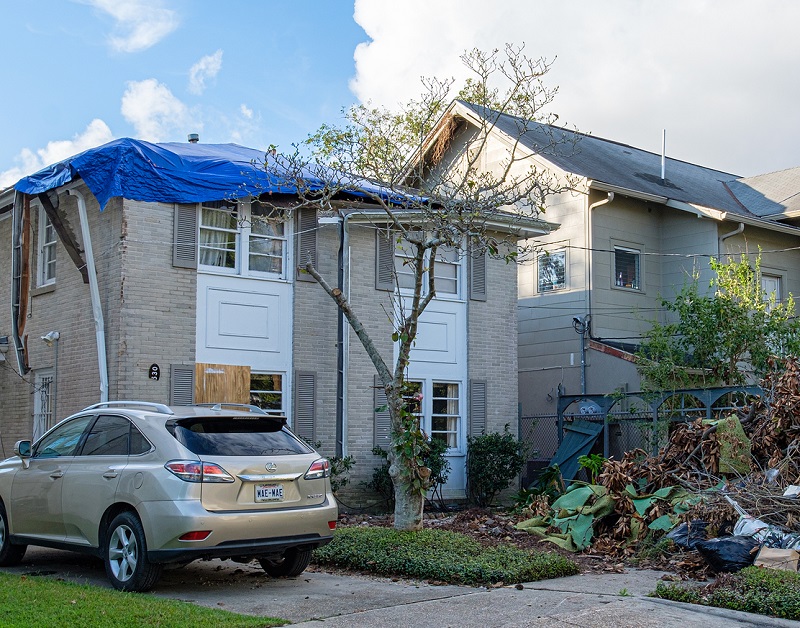The southeastern United States, particularly the state of Florida, is prone to being hit by tropical storms and hurricanes. In fact, hurricanes have hit all of Florida’s coastline over the years.
If you are a homeowner anywhere in the southern United States, there is a good chance that you have had to deal with storm damage after one of the many hurricanes that have swept through the region in recent years. Roof repair can be a costly and time-consuming process, but it is important to take care of any damage as soon as possible to prevent further problems down the road.
What Happens In a Hurricane?
A hurricane is a type of tropical storm that forms over the warm waters of the Atlantic Ocean, Caribbean Sea, or Gulf of Mexico. These storms have increased wind speeds that last for hours, sometimes reaching up to 175 mph. The wind also changes direction and is accompanied by heavy rainfall. As a result, hurricanes are capable of causing significant damage to homes and businesses.
Immediate damage from hurricanes typically comes from wind, hail, falling objects such as trees or utility poles, or heavy rains.
Wind Damage
One of the most common roof repair problems after a hurricane is roof damage caused by high winds. Wind damage is caused by the high, sustained winds that hurricanes have. These winds can put great pressure on the roof, which can result in missing, damaged, or loose shingles. It can also cause problems with fascia, metal flashing, and exhaust pipes.
In a hurricane, wind is not always blowing in one direction. Instead, it blows at inconsistent speeds and at different angles and directions. This causes a variety of strains on your roof:
- When wind hits the walls of your home, it travels upwards, which puts upward pressure on the roof.
- This pressure is especially high at the corners and along the edges.
- Negative pressure is exerted as the wind moves across the surface of the roof, which can lift roofing material.
Hail Damage
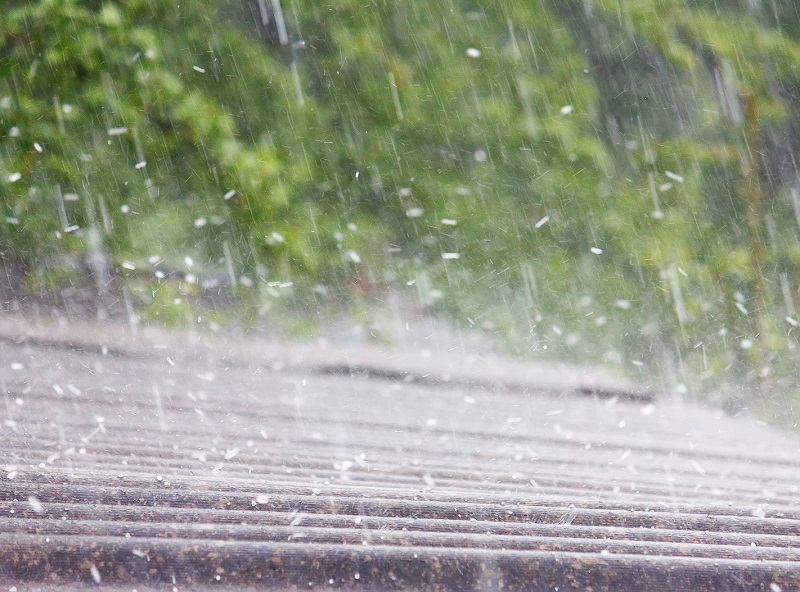
The hail that accompanies many hurricanes can also create siding or roofing damage, including flashing, gutters, and downspouts that are dented or missing.
Trees
Another common problem is roof damage caused by falling trees or branches. A tree that falls on a roof can cause extensive damage, including broken roof tiles or shingles, punctured roofing membranes, and damaged roof framing.
Heavy Rain
The heavy rains that hurricanes bring can also cause excessive wear and tear on your roof, causing it to age more quickly than it should.
Will Your Roof Be Damaged?
There are several factors that affect how (or if) your roof will be damaged in high winds, including:
- The roof’s geometry can impact how wind flows over and around the home. Roofs with wide eaves are more prone to the upward forces of wind hitting the walls of the home, whereas hip roofs allow the wind to flow over more readily.
- How the roofing material is secured to the roof decking.
- If the roof was installed properly.
- If the roof is old, or if previous damage or issues were not addressed properly.
How to Tell if Your Roof Is Damaged
It is always a wise idea to schedule a professional roof inspection after a major storm, especially a hurricane. Some roof damage may not be visible or readily apparent, but small problems now can lead to major issues later.
Without the benefit of a professional, there are a few things you can do yourself to check for roof damage. Always wait until the storm has passed before heading out to assess your home for damage.
Be sure to take a camera so that you can document any problem areas. Cameras also offer the ability to zoom in, which might allow you to see damage more easily.
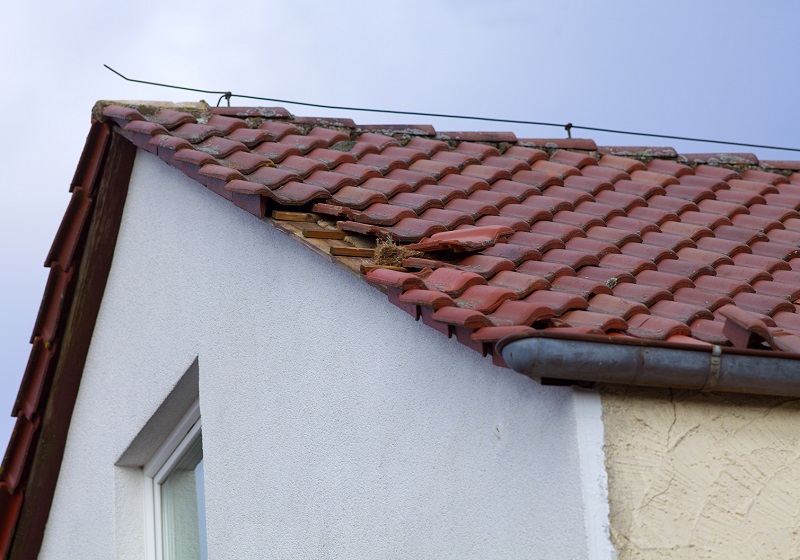
Exterior
- First, look at the roof from the ground. Do you see any shingles that are missing, damaged, or loose? Do gutters and downspouts look intact, or will you need gutter repair? Is there damage to vents, drip edges, or chimney caps? Can you see debris on the roof?
- Get up on a ladder and take a closer look, but do not climb onto the roof. Are there any broken or missing tiles? Are any shingles curled or buckled? Is there any water infiltration? Inspect the roof deck for warping or sagging.
Interior
- While it is light outside, take a flashlight (and camera) into the attic to check for leaks or stains on the underside of the roof decking.
- Check for holes or gaps where you can see daylight coming through the roof.
- Inspect walls and ceilings inside the home for stains or evidence of water. If enough water has come in, you may need ceiling repair as well as roof repair.
What to Do if Your Roof Is Damaged
If your roof has been damaged in a hurricane, it is important to take action as soon as possible. In all likelihood, many other homes in your area will have sustained damage, so demand for roofing services will be very high. Contact a professional roof contractor right away to get started on making the necessary repairs.
Here are some steps you can take if you think that your roof has sustained damage from a hurricane:
- Contact a professional roofing contractor to schedule an inspection and roof repair.
- If the roof does not have structural damage, secure a tarp or other temporary roofing material to prevent further damage.
- Stay safe and avoid contact with any downed power lines.
- Follow the roofing company’s recommendations for contacting your homeowner’s insurance company.
Minimizing Roof Damage from Hurricanes
Completely escaping roof damage in a hurricane is partly a matter of luck, but there are steps you can take prior to the storm to minimize the likelihood that your roof will need major repairs.
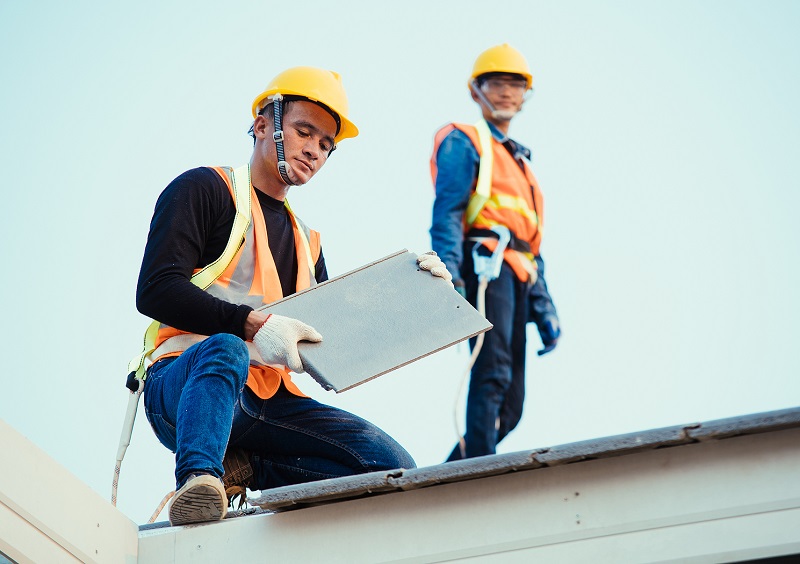
Regular Roof Inspections
By having roof inspections done on a regular basis, you can feel comfortable knowing that your roof is in the best shape it can be. When a hurricane is imminent, it may be too late to schedule an inspection, so it is best to be proactive so that you are not caught up in the frenzy that happens just prior to a major weather event.
Trimming Trees
Trim or remove trees and large branches that could fall onto your roof. This should always be done, since you never know when a branch might snap. However, when a storm is in the forecast, it is especially important to ensure that there are no large branches hanging over the roof, and that any unstable or dying trees that could fall on the house are removed.
Gutters
Hurricanes and other big storms can cause a lot of precipitation to happen in a short amount of time. Your home’s gutters and downspouts are intended to keep water away from areas that it shouldn’t be, such as around the foundation. Clogged gutters can cause water to back up, which can cause damage to eaves or roof sheathing. While you are cleaning your gutters, be sure that they are fastened securely to keep them from being blown off during windy conditions.
Homeowners Insurance and Hurricanes
Whether or not your homeowners insurance company will cover damage from a hurricane depends on the specifics of your policy. If you have certain provisions, the coverage may be limited or not be available at all.
In general, though, most standard homeowners policies cover at least some of the damage from a hurricane.
If your roof has damage, it is best to work with a professional roofing contractor who can assist you with filing the claims and necessary documentation to obtain your homeowners insurance benefits.
Which Roofing Materials Do Best in High Winds and Hurricanes?
All roofing materials have pros and cons, including their ability to withstand the high winds of a hurricane. Here is some general information about wind resistance of different roofing materials, but if you are considering a new roof you should consult a professional for recommendations in your specific situation.
Asphalt Shingles
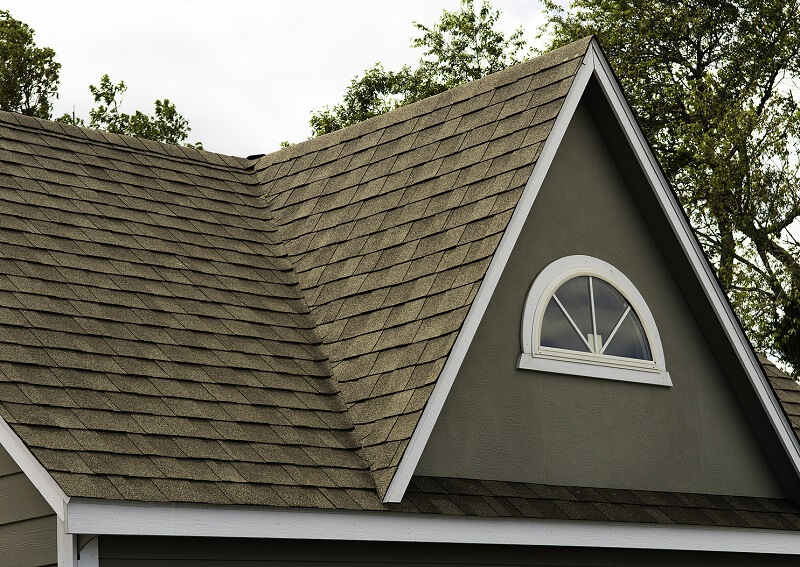
Asphalt shingles are the most common roofing material in use throughout the United States, found on 80% of homes according to the Asphalt Roofing Manufacturers Association. There is a wide variety of options when it comes to shingles, and their wind resistance varies.
Standard asphalt shingles can be expected to handle winds of 60- to 80-miles per hour. Architectural shingles are somewhat more wind-resistant, with the ability to withstand winds of up to 110 miles per hour.
Asphalt shingles are classified for wind resistance, using standards from ASTM International. Most carry one of two classifications:
- ASTM D3161 Class F. These shingles passed testing at 110 miles per hour.
- ASTM D7158 Class H. These shingles are expected to resist uplift at wind speeds of up to 150 miles per hour.
The Federal Emergency Management Agency has recommendations for homes where an asphalt shingle roof is being installed. These include using six nails (not staples) per three-tab shingle. If the home is near salt water, the nails should be made of stainless steel.
Metal Roofing
Metal roofing is generally wind-resistant up to 140 or 150-miles per hour. This is one reason that metal roofs are becoming increasingly popular for residential as well as commercial usage.
Unfortunately, metal roofing is somewhat more expensive than asphalt shingles, and some homeowners associations still have restrictions that prohibit its use. Newer options in metal roofing, however, offer a great many options, including some that mimic the look of asphalt shingles while offering the superior durability of metal.
One downside for metal roofing in hurricanes is that in some instances hail can cause dents. While these may not be damaging to the roof’s integrity, they can be unattractive.
Clay Tiles or Concrete Tiles
The main advantage that clay or concrete tiles have in a hurricane is that they are very heavy, and thus harder to lift. Properly installed tiles offer good wind resistance, but there are two drawbacks:
- Clay or concrete tile is generally a significantly more expensive option.
- If tiles are blown off in the high winds of a hurricane, they are much more dangerous than flying asphalt shingles.
It is important to remember that any roofing material can sustain damage in a hurricane. If you live in an area that is prone to hurricanes, it is best to choose a roofing material that is durable and will withstand high winds.
Lakeland’s Best Roofing Services
For residential roofing repair, commercial roofing repair, or any other roofing services, Roofing Depot of FL is your best choice. Our experienced team is committed to providing our customers with the best service, materials, and warranties in the industry.
Contact us today for a free inspection or to discuss your specific roofing needs.
